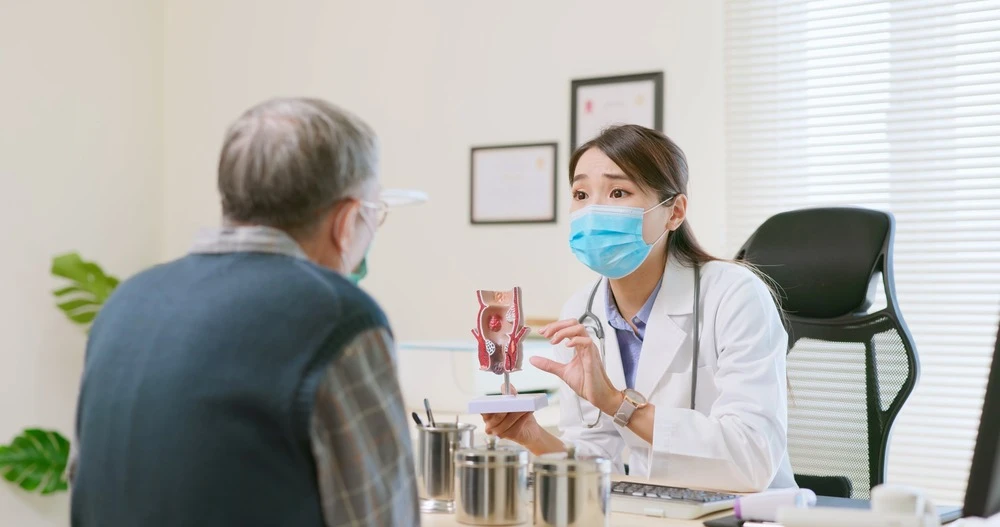Early detection and accurate diagnosis are critical when it comes to managing anorectal conditions such as hemorrhoids. In a city like Phoenix, where residents seek specialized care, a hemorrhoid doctor Phoenix plays a pivotal role in promoting colorectal health. These specialists are trained to identify and treat both internal and external hemorrhoids before they advance into more painful or complicated stages. This article explores how hemorrhoid doctors in Phoenix diagnose and detect issues through comprehensive exams, advanced tools, and early intervention.
Initial Consultations and Physical Exams
1. Patient History Review
A hemorrhoid doctor begins by collecting a thorough medical history. This includes asking about symptoms such as itching, pain during bowel movements, or rectal bleeding. The doctor may also ask about diet, bowel habits, lifestyle factors, and family history of colorectal issues. This background provides essential context to guide the examination and treatment plan.
2. Visual and External Examination
If external hemorrhoids are suspected, a visual inspection of the anal area is performed. This helps the doctor assess inflammation, thrombosis, or prolapsed tissue. Visual exams are quick, non-invasive, and offer immediate insights into the presence and severity of external hemorrhoids. They are often the first step before moving on to internal evaluations.
3. Digital Rectal Examination (DRE)
For a more comprehensive assessment, the doctor may conduct a digital rectal exam. This involves gently inserting a gloved, lubricated finger into the rectum to feel for lumps, swelling, or abnormalities. The DRE can help identify internal hemorrhoids or signs of more serious conditions like rectal tumors or abscesses. It’s a vital part of ensuring a complete and accurate diagnosis.
Differentiating Hemorrhoids from Other Conditions
1. Colorectal Cancer
Rectal bleeding is a symptom shared by both hemorrhoids and colorectal cancer, making an accurate diagnosis vital. A hemorrhoid doctor must ensure the bleeding isn’t due to polyps or malignancies. If there is any concern, the doctor may refer the patient for a colonoscopy. Early detection of cancerous growths significantly improves treatment outcomes.
2. Anal Fissures
Painful bowel movements and small amounts of bleeding could also indicate an anal fissure. These are small tears in the anal lining and are often mistaken for hemorrhoids by patients. A careful inspection allows the doctor to distinguish fissures, which require a different treatment approach focused on healing the tear and preventing recurrence.
3. Rectal Infections or Abscesses
Some symptoms like pain, swelling, and discharge may stem from bacterial or viral infections rather than hemorrhoids. Infections may lead to abscesses or fistulas, which require antibiotics or surgical drainage. A hemorrhoid doctor evaluates these symptoms to avoid misdiagnosis and ensure proper treatment is administered quickly.
4. Inflammatory Bowel Disease (IBD)
Conditions like Crohn’s disease or ulcerative colitis can mimic hemorrhoidal symptoms. A specialist will assess any signs of chronic inflammation, weight loss, or frequent diarrhea. If IBD is suspected, patients are referred to a gastroenterologist for further testing and coordinated care.
Use of Anoscopy and Other Tools
1. Anoscopy
An anoscope is a small, tubular device inserted into the rectum to visualize the lower rectal canal. This tool enables the doctor to examine internal hemorrhoids directly and assess their grade or severity. It’s a quick, relatively painless procedure that provides immediate diagnostic clarity. Anoscopy is especially useful when symptoms are persistent but external signs are minimal.
2. Proctoscopy
In cases where a deeper examination is needed, a proctoscope may be used. This tool allows for inspection of the entire rectum and offers a more complete view than an anoscope. It’s often used for evaluating prolapsed internal hemorrhoids or for patients with multiple or recurring symptoms. Proctoscopy can also aid in identifying other rectal conditions that mimic hemorrhoids.
3. Flexible Sigmoidoscopy
For a broader view of the colon and rectum, a hemorrhoid doctor may order a flexible sigmoidoscopy. This test uses a flexible tube with a camera to evaluate the lower part of the large intestine. It is particularly helpful if symptoms suggest possible polyps, ulcers, or other structural changes. While more involved than anoscopy, it plays an important role in cases with unclear diagnoses.
4. Infrared Coagulation (IRC) Systems
Some offices are equipped with IRC systems used both diagnostically and therapeutically. These can treat small internal hemorrhoids with targeted infrared light while also confirming the source of symptoms. The dual function makes IRC a valuable tool in modern hemorrhoid clinics.
Importance of Early Intervention
1. Prevents Hemorrhoid Progression
Early-stage hemorrhoids can often be treated with non-invasive measures like dietary changes, topical treatments, or in-office procedures. If left untreated, hemorrhoids can enlarge, prolapse, or become thrombosed, requiring more complex intervention. A hemorrhoid doctor can halt this progression through early detection and patient education.
2. Reduces the Need for Surgery
Timely medical intervention can reduce or eliminate the need for surgical procedures. Office-based treatments like rubber band ligation or sclerotherapy are more effective when hemorrhoids are diagnosed early. Surgery is typically reserved for advanced cases and carries more risks and recovery time, making prevention through early care highly desirable.
3. Improves Quality of Life
Persistent hemorrhoidal symptoms can disrupt daily life, from sitting discomfort to anxiety about bowel movements. Early evaluation and treatment improve comfort and restore confidence. Patients often report significant relief from minor changes and early-stage therapies recommended by their doctor.
Conclusion
A hemorrhoid doctor serves as a vital resource for patients seeking clarity and relief from rectal discomfort. Through comprehensive consultations, physical exams, advanced diagnostic tools, and a focus on early intervention, these specialists ensure that hemorrhoids and other conditions are identified and managed efficiently. Prompt evaluation reduces the risk of complications, minimizes pain, and often avoids the need for surgery. By addressing symptoms at their earliest stage, patients can return to normal activities sooner and with greater peace of mind.






